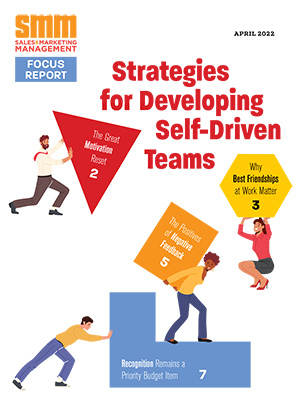You don’t have to reinvent the wheel every time you write an email to make it compelling. You just need to clearly articulate your value in a way that’s specific, relevant, and urgent to your audience. Know whom you’re talking to and contextualize your conversations within their respective categories. Be relevant by finding new ways to segment your prospects further and be more specific to particular subgroups — that’s how you write sales emails that get responses.
The point is to make your audience feel like part of a conversation instead of marks being targeted. For example, I can build a perfect profile of my green-thumbed neighbor and send him a highly targeted email about new sprinklers. However, if he’s more interested in desert plants, then the message isn’t relevant. Research your audience’s challenges and position yourself as a potential solution (without being a hard seller). Knowing their concerns makes it easier to instill some urgency into your emails as well. Time restrictions such as limited-time offers can give your prospects just the push they need to sign.
So can perfect targeting and messaging. I once received an email for an indestructible Frisbee from a pet store that I’ve visited multiple times for dog toys. It put its customer info to use and pitched a product that it knew I just had to have yesterday. It worked, and I still shop there as often as possible. The store’s email wasn’t worthy of a Pulitzer, but it addressed my specific concern — the need for a toy that my dog couldn’t destroy — in a way that made me feel it was exactly the solution I needed.
It’s Worth the Effort
Compelling emails do more than make your brand stand out; they also increase profitability on multiple fronts. For example, you can convert more prospects with better messaging and more effectively manage your resources because of those results.
Let’s say you purchase a list of 10,000 prospects for $1,000, or 10 cents per name. Your generic emails get a reply rate of about 1 percent (100 people) and an end conversion rate of 5 percent, or five new customers. Now, let’s say you buy the same 10,000 prospects for the same $1,000, but you target them with a more compelling email campaign.
That strategy bumps the reply rate up to 10 percent (1,000 people) with the same end conversion rate of 5 percent. That equals 45 more customers without spending a penny more on list acquisition. The only added cost is the time and effort it takes to write up the targeted emails.
So why is it so difficult to consistently write sales emails that get responses? Quite often, it’s because you’re trying too hard. There are three very simple guidelines for writing worthy emails, and being compelling is only one of them. The other two are being clear and being concise, and clarity can be more difficult to master than compulsion.
This is where storytelling, easy comparisons, and the ability to explain as though you’re talking to a 5-year-old really pay off. Laugh or shrug all you want when someone describes their product as the Uber of toothpaste or something similar, but if the silly phrase sticks in a prospect’s head and clearly explains the product, then it has done its job well.
How to Make Good Emails a Habit
The greatest challenge is understanding what’s compelling to your audience members. Only then can you devise and implement a strategy for reaching out to them successfully — and these four strategies will help you do just that:
1. Write down every idea without judgment.
It almost goes without saying that some things you can write on behalf of your organization and some things you probably can’t. But throw that away during the drafting process. Write down anything that gets your point across — whether it’s an obscure pop culture reference or a joke about your brother-in-law — and edit it later. It’s much easier to refine a crazy but great idea than it is to turn a boring one into something magnificent.
2. Use as much data as makes sense.
Your emails can’t be very specific or relevant without some background research into your prospects. Even if you only know what industry they’re in and which titles respond to different types of messaging, use that data to its fullest potential. That doesn’t mean you have to directly incorporate every piece of data you have into your campaigns, but test the results of different data points across your entire strategy.
3. Say what you need and no more.
Email is a short-form medium, and your messaging has to respect that. If your incredibly targeted, relevant, and urgent message is all just a massive block of text, it’ll just intimidate prospects into clicking away. Keep sentences short, and use paragraph breaks liberally. The sweetest spot is most often between 90 and 130 words within no more than three or four paragraphs.
4. Use what works, throw away what doesn’t.
After creating your email hypotheses and sending out your campaigns, capture all the performance data you can. A compelling campaign won’t just be a single email, so take the time to mark what works and what doesn’t. Explore different tactics for different outcomes, gather and build upon your findings to avoid mistakes, and start every new project further along than you were when you started the one before.
Writing truly compelling sales emails that get responses is challenging. You only have a few words to prove your relevance in an engaging manner, which leaves little room for error. With these tips, though, it’s a much easier challenge to overcome. Once you do, the results will speak for themselves.
Ryan Myers is the creative director at Sapper Consulting, which replaces cold calling for its clients. It’s cooler than it sounds.


